
Open any classic cookie recipe and you'll spot brown sugar on the ingredient list. It's not just there for a slight caramel taste—brown sugar totally changes how cookies turn out. People swear by it for chewy, soft cookies with a deep flavor, and they're not wrong.
Unlike regular white sugar, brown sugar comes packed with a bit of molasses. This tiny addition packs a double punch: the cookies get richer in taste and they stay moist longer. Ever bitten into a homemade chocolate chip cookie that's chewy in the center? That's pretty much brown sugar working its magic.
If you want cookies that keep their soft bite for days, brown sugar is your best friend. Seriously, it's the secret behind those bakery-style treats everyone fights over at the bake sale.
- Brown Sugar: What Makes It Different?
- Texture Magic: Chewy vs. Crispy
- Boosting Flavor and Color
- Moisture Matters
- Swapping and Mixing Sugars
- Tips for the Best Brown Sugar Cookies
Brown Sugar: What Makes It Different?
Brown sugar isn’t just white sugar with a tan. The big difference is molasses. During the making of brown sugar, a bit of molasses stays in—or sometimes gets added back in—during the process. This one simple thing is what sets it apart from plain sugar cubes or those tiny sugar packets you see at diners.
If you've ever noticed that brown sugar sticks together into clumps, that's the molasses. It not only gives brown sugar its color but brings a richer taste. Brown sugar has two main types you’ll see in recipes:
- Light brown sugar: About 3.5% molasses. It’s what most cookie recipes call for and gives a mild, crowd-pleasing flavor.
- Dark brown sugar: Roughly 6.5% molasses. Use this for a deeper, almost toffee-like taste and darker color.
Here’s a quick breakdown of what’s actually in brown sugar compared to white sugar:
| Type | Molasses Content | Moisture | Color |
|---|---|---|---|
| White Sugar | None | Low | White |
| Light Brown Sugar | ~3.5% | Medium | Light brown |
| Dark Brown Sugar | ~6.5% | High | Dark brown |
The extra molasses in brown sugar pulls in water, making it feel moist and sticky. For cookies, this means your dough won’t dry out as fast. So, if you ever wondered why store-bought cookies taste kinda bland but homemade ones sing, brown sugar is a big part of that magic.
When you see chocolate chip cookies with a gooey middle and rich flavor, it’s usually thanks to the brown sugar. It’s not just about sweetness—brown sugar changes everything from color to how long your cookies stay soft. And, bonus, it’s packed with flavor that plain sugar just can’t deliver.
Texture Magic: Chewy vs. Crispy
If you’ve ever baked cookies and wondered why some turn out chewy and others end up crunchy, brown sugar is the real game-changer. It all comes down to science. Brown sugar contains molasses, making it more hygroscopic—that’s just a fancy way of saying it pulls in and holds onto moisture better than white sugar. This extra moisture stops your cookie from drying out and keeps the center soft, even after a couple of days.
Let’s break it down. When you use more brown sugar in a recipe, your cookies stay softer and chewier. If you swap it out for all white sugar, expect flatter, crispier cookies that might not be as satisfying if you’re into that classic chewy mood. Why? White sugar encourages more spread in the oven and dries as it bakes, while brown sugar makes dough denser and thicker.
Here’s a quick comparison so you can tweak your homemade batch just the way you like:
| Type of Sugar | Texture | Spread | Moisture |
|---|---|---|---|
| Mostly Brown Sugar | Chewy | Less spread | More moisture, stays soft |
| Mostly White Sugar | Crispy/Crunchy | More spread | Less moisture, dries out |
If you’re aiming for chewy cookies, try using a higher ratio of brown sugar to white sugar—think a 2:1 ratio, or even swap out white sugar completely in some chocolate chip cookie recipes. But if you love that snappy, crisp bite, stick with white sugar or balance both sugars evenly.
One more tip: chilling your dough also boosts chewiness, because it gives the flour time to absorb liquids—so pairing this with brown sugar is a one-two punch for soft, thick cookies.
Boosting Flavor and Color
If plain white sugar makes cookies sweet, brown sugar brings a whole lot more to the party: it gives cookies that deep, toasty flavor and a warm color you can see right out of the oven. This isn’t magic—it's molasses. Brown sugar is just white sugar mixed with molasses, and that small tweak does big things for cookies.
People usually reach for brown sugar when they want that hit of rich, almost caramel-like taste. It’s why chocolate chip cookies from popular bakeries always taste a little extra. The molasses brings out chocolate, nuts, or spice flavors. Even oatmeal cookies pop more with brown sugar instead of just white sugar. Fun fact: light brown sugar is about 3.5% molasses, while dark brown sugar jumps to nearly 6.5%, so the darker stuff brings bolder flavor and a deeper color.
The color is more than just good looks. The Maillard reaction—basically the browning that happens during baking—is boosted by brown sugar, so your cookies finish with that tempting golden-brown edge and a richer aroma. If you want cookies to look and taste like something you’d buy at a shop, brown sugar helps you get there.
| Sugar Type | Molasses Content | Impact on Cookies |
|---|---|---|
| White Sugar | 0% | Lighter, crispier, subtle taste |
| Light Brown Sugar | ~3.5% | Slightly chewy, mild caramel notes, golden color |
| Dark Brown Sugar | ~6.5% | Very chewy, strong molasses flavor, dark color |
So, if you crave cookies that stand out, swap some or all of the white sugar for brown sugar. Just remember—more brown sugar means a stronger flavor and darker look. You can always adjust the type and amount to suit your taste, which is a simple way to level up your homemade cookies fast.

Moisture Matters
Talk about game-changers in baking and you can’t ignore what brown sugar does for cookies: it adds moisture that regular white sugar just can’t. That’s not hype—it’s because brown sugar actually contains molasses, which is basically sugar syrup still hugging a bit of water. Even a tablespoon of brown sugar in your dough can keep cookies softer for days.
Check out the difference between white and brown sugar when it comes to moisture:
| Type | Water Content (%) | Main Sugar | Molasses? |
|---|---|---|---|
| White Sugar | 0.005 | Sucrose | No |
| Light Brown Sugar | 2.0 | Sucrose | Yes (about 3.5%) |
| Dark Brown Sugar | 3.5 | Sucrose | Yes (about 6.5%) |
See those numbers? Even a small boost in water content makes a big difference. That’s why cookies made with brown sugar won’t dry out fast or get rock-hard the next day. If you live somewhere with dry air, it’s the trick you need for preventing sad, crumbly cookies. And if you ever accidentally leave your cookies uncovered, brown sugar can save them from going stale super quick.
Want even more moisture? Use dark brown sugar. The higher molasses makes things even softer and gooier. Some bakers even add a tablespoon of honey or maple syrup along with brown sugar for extra staying power—especially if they plan on saving cookies over the week.
In short: for soft, chewy texture that holds up, brown sugar isn’t optional. It’s the real deal for cookie dough that stays tender and delicious, bite after bite.
Swapping and Mixing Sugars
If you’ve ever run low on one type of sugar, you might’ve wondered if you can switch things up in your cookie recipe. Good news: you can, but the results will change. Brown sugar and white sugar aren’t just flavor swaps—they give cookies very different textures and looks.
If a recipe calls for brown sugar, you can use white sugar, but expect crispier and lighter cookies. The flip side? Using all brown sugar makes cookies moister, chewier, and they’ll turn a little darker too. Lots of bakers mix both to get the best of both worlds—soft centers with just the right amount of crunch on the edges.
Here’s a quick cheat sheet:
- Brown sugar for chewiness and a slight molasses taste.
- White sugar for crispy, thin cookies with a lighter flavor.
- Mix of both for soft-inside, crisp-edge cookies that most folks crave.
Something cool: you can make your own light or dark brown sugar at home if all you’ve got is white sugar and a bottle of molasses. Just mix 1 tablespoon of molasses into a cup of white sugar for light brown sugar. Want dark? Use 2 tablespoons. Works like a charm when you’re in a pinch.
Curious how the sugar combos change cookies? Check out the results in this simple table (based on a classic chocolate chip cookie recipe):
| Sugar Combo | Texture | Flavor | Color |
|---|---|---|---|
| All Brown Sugar | Very Chewy | Rich, Caramel | Darker |
| All White Sugar | Crispy | Mild, Sweet | Pale |
| Half Brown & Half White | Chewy Center, Crispy Edges | Balanced | Golden |
Remember, swapping sugars might mean you’ll need to adjust baking time just a bit because brown sugar makes cookies spread less and retain more moisture. Don’t be afraid to experiment—every oven and cookie lover is a little different!
Tips for the Best Brown Sugar Cookies
If you want to make cookies that stay soft, chewy, and packed with flavor, you really have to pay attention to the details. Here are the tried-and-true moves that give homemade cookies that unbeatable, bakery-style magic.
- Brown sugar matters: Stick with light brown sugar for a gentle, sweet flavor, or use dark brown sugar for a bigger hit of molasses and richer color. Whichever you pick, make sure it’s fresh—hard brown sugar won’t cream properly and can mess with your texture.
- Don’t skip the creaming step. Creaming butter and brown sugar well (3-4 minutes) traps air and helps your cookies puff up and turn out soft, not flat. Room-temperature butter (not melted!) makes this way easier.
- Chill your dough for at least 30 minutes. This keeps the cookies thick, stops them from spreading too much, and actually helps the flavor settle in. If you have time, chill overnight. It really makes a difference.
- Watch your baking time. Pull cookies out when they look just set at the edges but a bit soft in the middle. Cookies keep baking for a few minutes outside the oven—that’s the secret to chewy middles!
- Try adding a tablespoon of extra brown sugar for even more chew. Some folks swap out a little white sugar, but upping the brown sugar is a real game-changer for tenderness.
Here’s a quick cheat sheet for how brown sugar affects cookie texture compared to white sugar, based on the amount used in a standard recipe:
| % Brown Sugar | Texture | Flavor |
|---|---|---|
| 0% | Crispy | Mild, simple |
| 50% | Slightly chewy | Mild caramel notes |
| 100% | Very chewy | Deep, rich, molasses |
Last tip? Store your brown sugar cookies in an airtight bag with a slice of bread. The bread gives up its moisture and keeps your cookies pillowy soft (the bread will dry out, that’s normal). If you’re batch-baking, flash freeze dough balls and bake straight from the freezer—they come out perfect every single time.


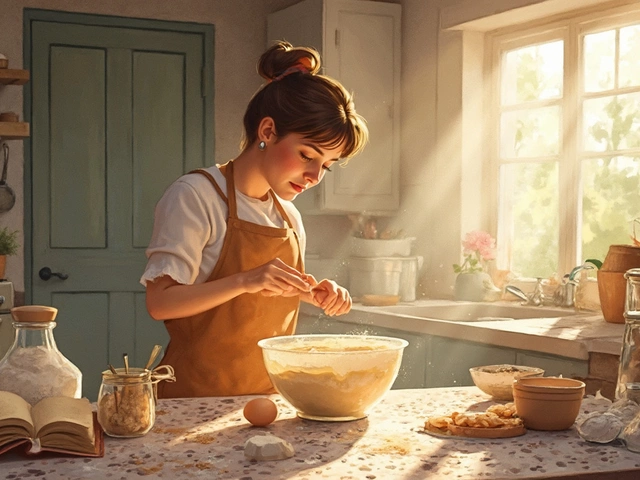
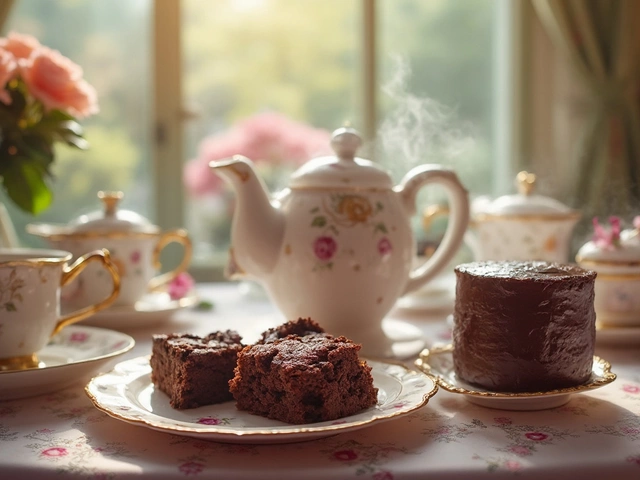
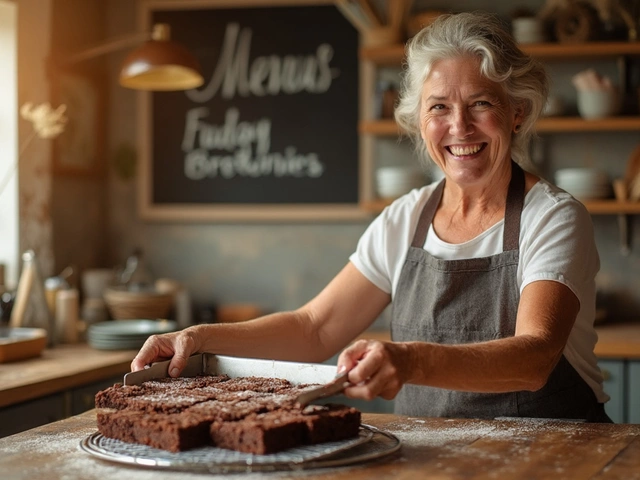
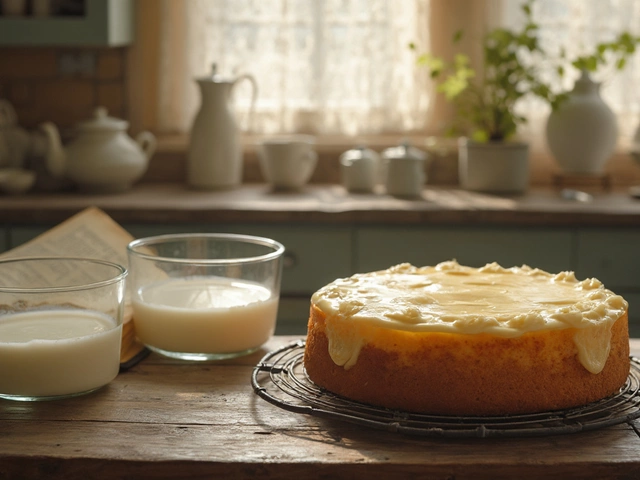
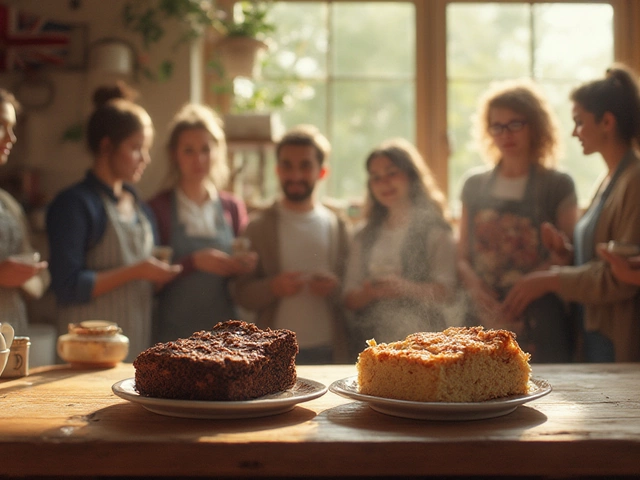
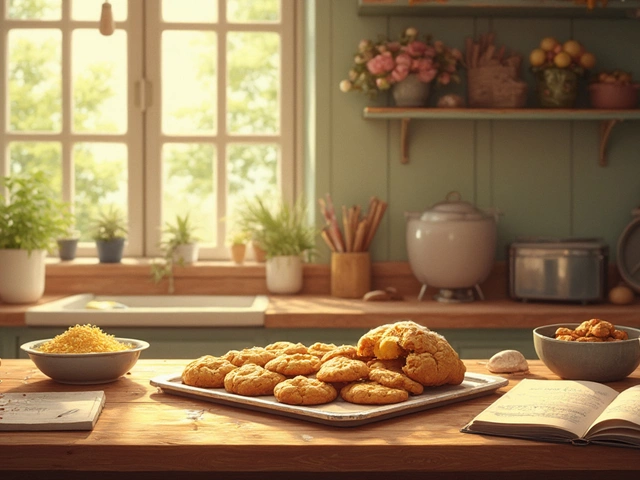
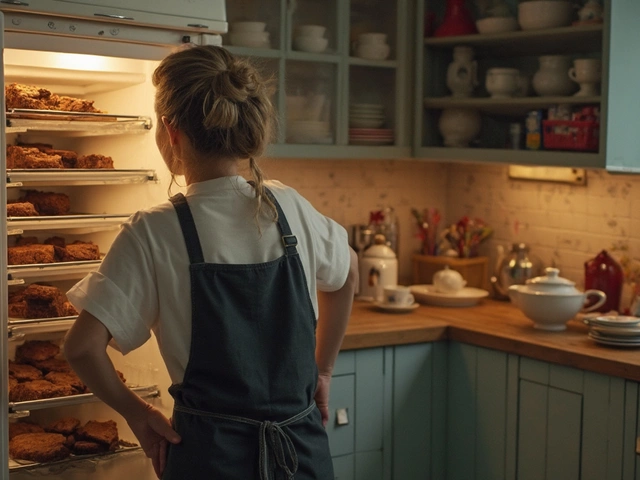


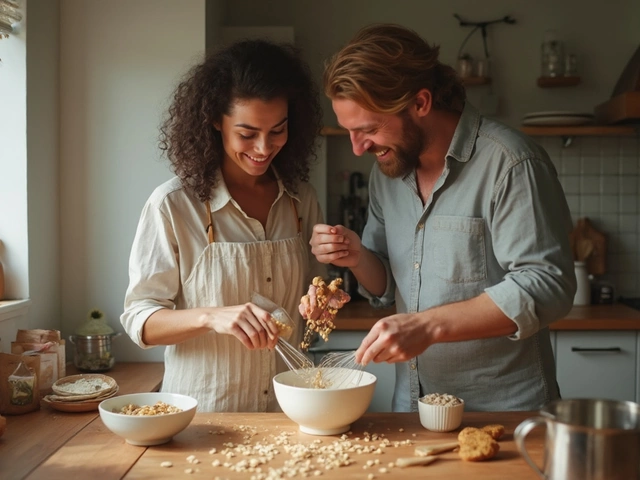
Write a comment